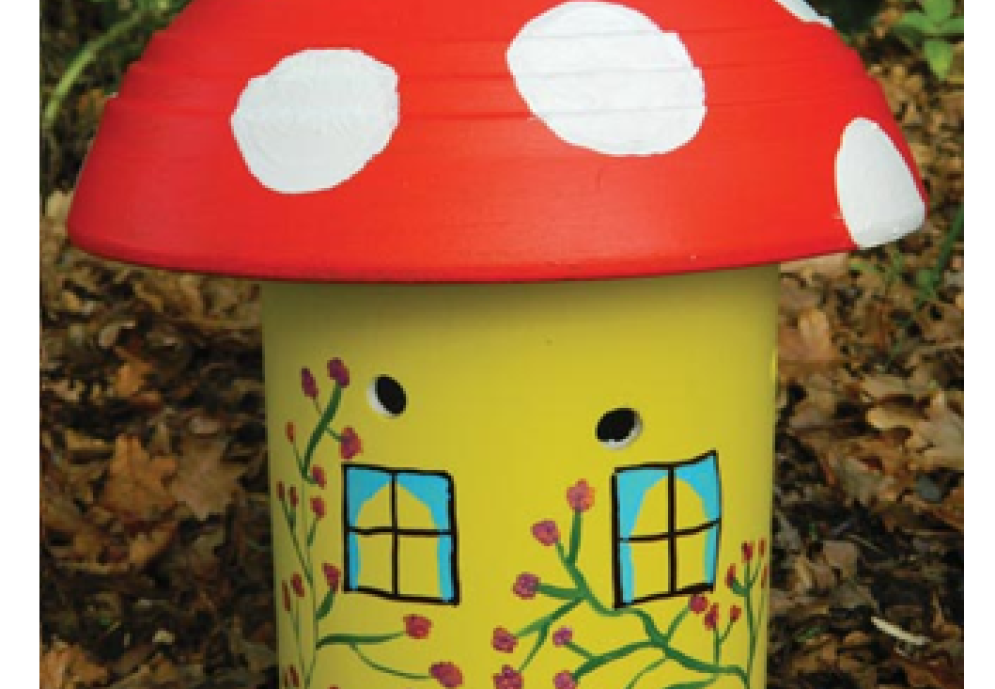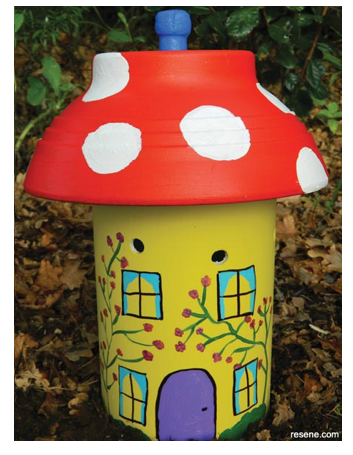

Snack bar for earthworms
Recycle food waste so that it doesn't go to landfill. Earthworms can snack on our waste and turn it into rich compost!
Lernergebnis
When we clean/prepare vegetables, there are always unusable leaves or other parts of vegetables. Turning it into a compost is always a better idea than putting it into the rubbish. Composting means giving nutrients back to the soil and producing less CO2 emissions compared to vegetable leftovers in the landfill. Why not have your own compost?
Instead of the compost bin, make your colourful snack bar for earthworms together with the children!
The more vegetables we eat, the more food worms will have.

Photo: Diane Turner, Kiwi Gardner magazine, Resene colours
Take a look at how the snack bar for earthworms looks inside!
Learning outcome:
- children learn that vegetables do not belong in the rubbish,
- they get to know that composting helps protect the climate because it produces fewer greenhouse gases,
- they learn about the importance of soil fertility, where earthworms play an important role and everything can be observed in their kindergarten garden,
- children eat more vegetables – the more they eat, the more residues there are for the worms.
Erforderliche Zeit
Three hours for making the snack bar for earthworms, then the whole school year for feeding the earthworms with vegetable and fruit residues from the kitchen.
Material
For making the snack bar for earthworms:
- an old plastic pipe,
- a drill, drill bit and spade
- rough sandpaper
- colours of your choice
- 1 small terracotta pot (or a flat paving stone)
- straw and newspaper
- compost and food scraps
- earthworms
For feeding the earthworms in their snack bar:
- food scraps suitable for earthworms (find out which they are!)
Beschreibung der Aktivität
First, we need to make snack bars for the earthworms, the help of a school caretaker would be beneficial. When you put the earthworms into their snack bar and add vegetables, they will start to make compost. Liquid also will be produced and the soil around the snack bar will greatly improve, and become more fertile.
More detailed instructions for building the earthworms snack bar are in the additional material. Throughout the year, children regularly check the snack bar and fill it with vegetable waste from the kitchen. They will observe how earthworms break down organic matter and turn it into compost, which acts as a fertiliser and helps grow strong, hardy plants. Earthworms are very active, and the pupils will be able to watch how the height of the vegetables in the snack bar decreases. Earthworms don't stand still in winter; they are just slower.
Additional activity
Why not observe earthworms, how much they eat and how fast they are? Draw a line inside of the snack bar each time you feed them and see how hungry they are!
Lehrplanbezug
Pedagogues can explain why worms are vital for the soil and how important is to grow them.
Environment/Nature – children observe the earthworms, their habits and their living environment, and learn to be respectful to all living creatures. Children notice the changes in the soil around the snack bar in the long term and the effect that organic waste has on the environment. They find out that composting is a good way to deal with it.
Additional material
Turner, D. Worm tower. Reseene. Link: https://www.resene.co.nz/Weekend-Gardener/166-worm-tower.htm
Mitrovic, I. Compost – feeding the Earth with Waste. ETH Zurich. Link: https://wp-prd.let.ethz.ch/WP0-CIPRF91243/chapter/compost-waste-feeding-the-earth/
RHS: What to compost and what to avoid. link: https://www.rhs.org.uk/soil-composts-mulches/worm-composting
Slabe A., Turk L., Fabjan J., 2018, Kompost gre v šolo. Link: http://www.itr.si/kaj-delamo/projekti/kompost-gre-v-solo-ekosklad
Bordon T.,: Učno gradivo za ozaveščanje o izgubah hrane in odpadne hrane ter dvig prehranske pismenosti za prvo triado osnovne šole. Ljubljana: MKGP, 2024. Dostopno na: https://www.nasasuperhrana.si/projekti/spostujmo-hrano-spostujmo-planet/gradiva-in-povezave/izobrazevalne-vsebine/
Turner, D. Worm tower. Kiwi Gardner magazine. Reseene. Link: https://www.resene.co.nz/Weekend-Gardener/166-worm-tower.htm
